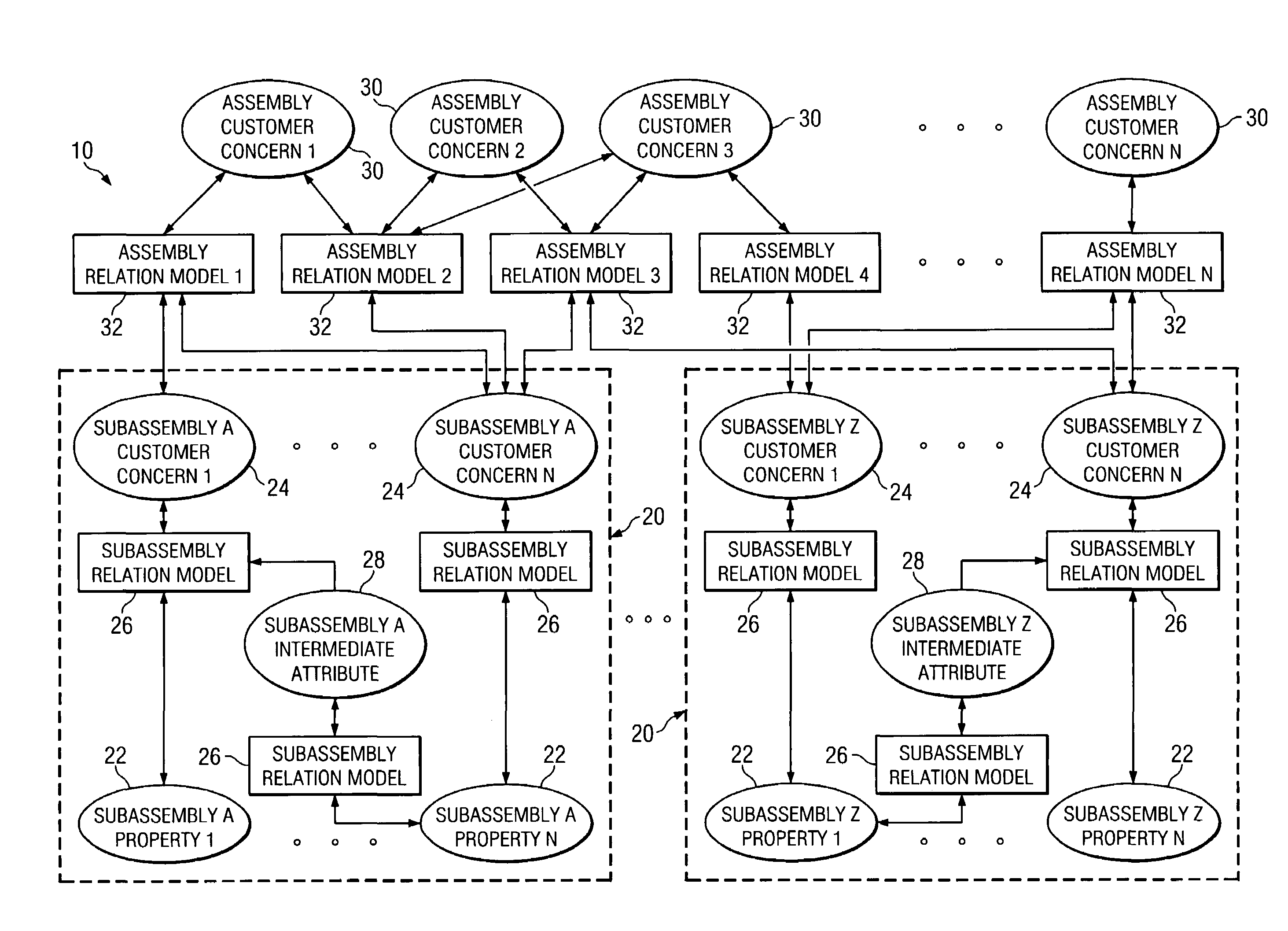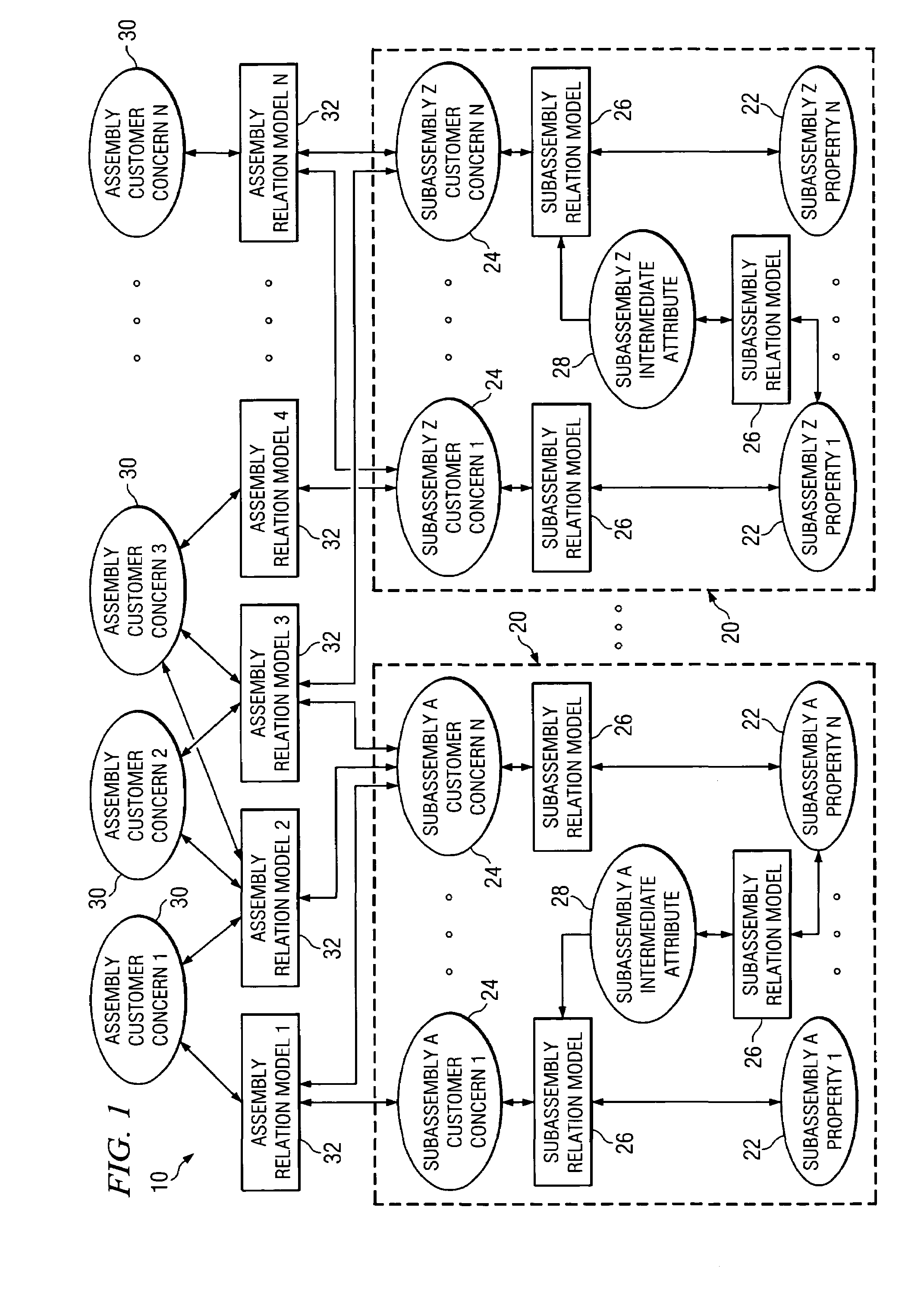System, method, and software for relation-based product development
a relation-based product and system technology, applied in the field of product development techniques, can solve the problems of incomplete subassemblies that do not fully meet the expectations of that subassembly, engineers may have underperformed, specifications may not be fully realized, etc., and achieve the effect of reducing or eliminating at least some of the disadvantages and problems
- Summary
- Abstract
- Description
- Claims
- Application Information
AI Technical Summary
Benefits of technology
Problems solved by technology
Method used
Image
Examples
Embodiment Construction
[0028]As described above, typical product development techniques result in design decisions that limit that potential innovation, resulting in inferior product designs, and also typically requiring reworking of these inferior product designs, resulting in the product development being completed behind schedule. Productivity in product development is further limited by the great difficulty that design teams and businesses have in capturing the knowledge learned during previous product development projects in a form that can be used effectively on later projects. The knowledge that needs to be captured is not simply the prior design—it is the underlying knowledge that properly drove the design decisions embodied in those prior designs. A finished design specification, drawing, or solid model simply does not provide an understanding of this knowledge that drove the design decisions.
[0029]However, if a system that allows capture of and visibility to such product development knowledge is...
PUM
 Login to View More
Login to View More Abstract
Description
Claims
Application Information
 Login to View More
Login to View More - R&D
- Intellectual Property
- Life Sciences
- Materials
- Tech Scout
- Unparalleled Data Quality
- Higher Quality Content
- 60% Fewer Hallucinations
Browse by: Latest US Patents, China's latest patents, Technical Efficacy Thesaurus, Application Domain, Technology Topic, Popular Technical Reports.
© 2025 PatSnap. All rights reserved.Legal|Privacy policy|Modern Slavery Act Transparency Statement|Sitemap|About US| Contact US: help@patsnap.com



